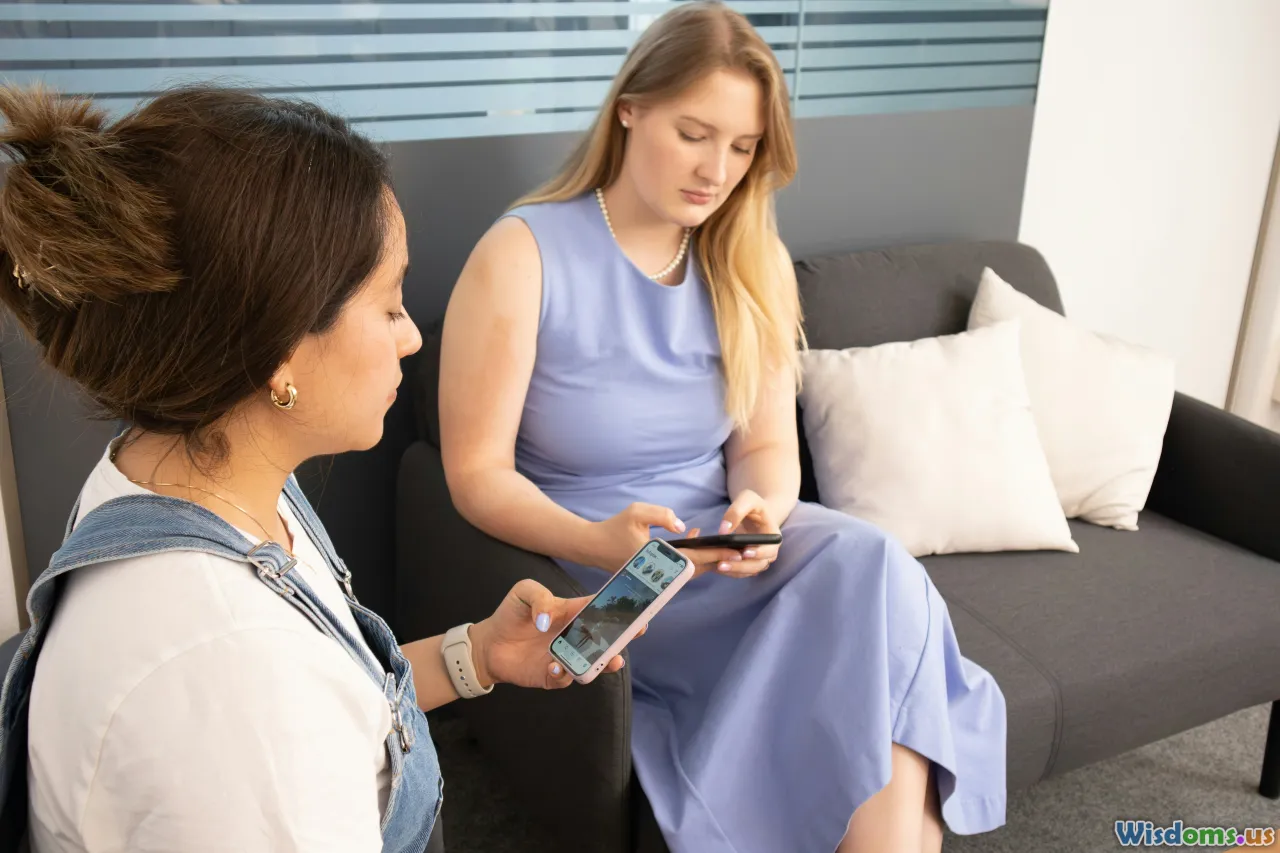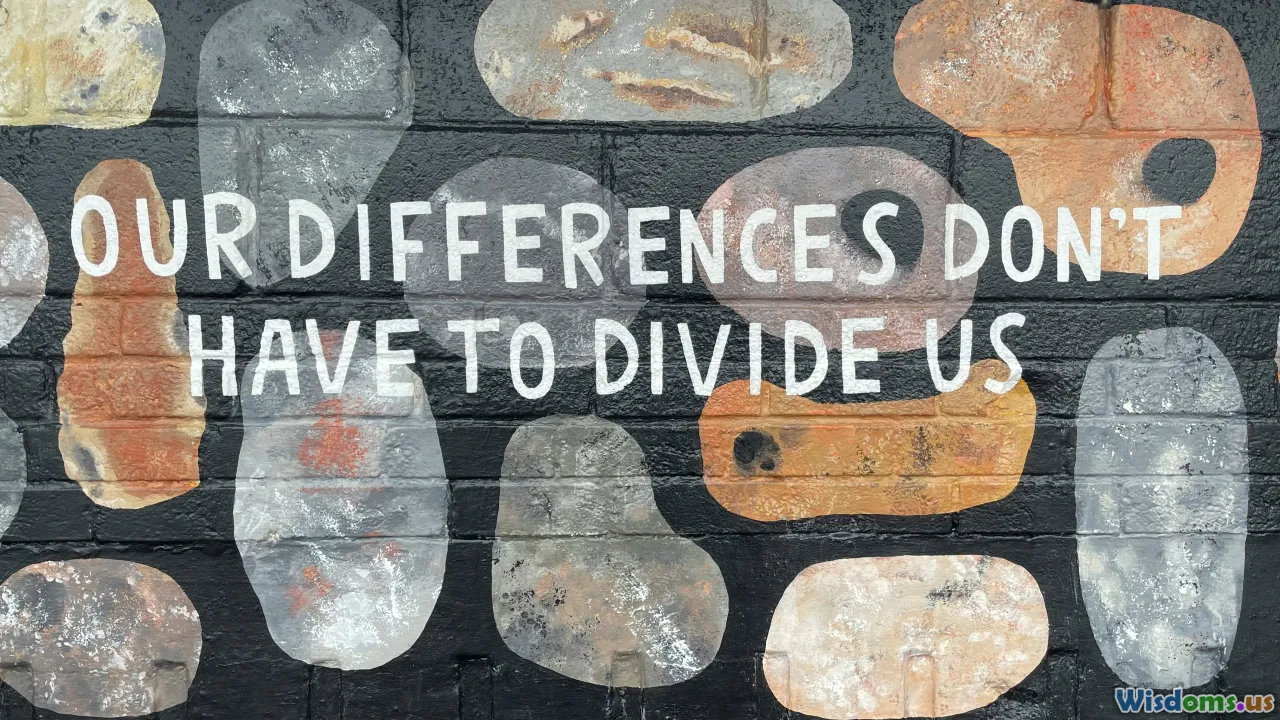
Does Online Counseling Beat In Person Sessions for Teens
17 min read An in-depth look at how online counseling compares to in-person sessions for teens, examining benefits, challenges, and effectiveness. (0 Reviews)
Does Online Counseling Beat In-Person Sessions for Teens?
Picture a teenager struggling through a difficult phase—perhaps they're facing social anxiety, depression, or the weight of academic pressures. Traditionally, support meant booking an appointment and sitting down in an office with a therapist. But with digital innovations rapidly changing every aspect of life, a revolution is unfolding in mental health too. More teens now turn to online counseling as a lifeline in stormy times. But can a video call, chat, or virtual session really match—let alone surpass—the value of seeing a counselor face-to-face?
The Surging Popularity of Online Counseling Among Teens

Recent years have seen an explosion in digital wellness resources, with online counseling becoming especially popular among teens. The National Survey on Drug Use and Health found that, since 2019, virtual mental health service utilization among American adolescents increased by more than 35%—a trend accelerated by the COVID-19 pandemic. This growing preference raises a pivotal question: what about online counseling is resonating with youth?
For many teens, technology is woven into daily life. Phones, laptops, and social media are integral, making digital environments feel native and comfortable. Seeking help in these familiar spaces often feels less intimidating than walking into a therapist's office. According to a 2022 Pew Research Center study, 95% of teenagers have access to a smartphone, and about 45% are online almost constantly. These stats point to the potential reach and acceptance of online therapy in meeting teens where they already are.
Anecdotes from school counselors also highlight this shift. Jenna, a high school counselor in Seattle, shared, “Students who were withdrawn in person sometimes opened up during virtual sessions. I noticed greater participation and honesty—even those who refused in-person meetings were willing to chat online.”
Factors Driving Teens Toward Online Counseling

Many elements contribute to the allure of online mental health services for teens. Privacy tops the list. For a teenager, the thought of being seen entering a counselor’s office may cause embarrassment. Online counseling eliminates that barrier—sessions can be conducted from the privacy (and safety) of their bedroom or any place they choose.
Flexible scheduling is another draw. With jammed school timetables, extracurricular activities, and possibly a part-time job, teens (and their parents) may not be able to accommodate frequent commutes to a therapist’s office. Online services tend to offer greater flexibility with timing, sometimes providing options after traditional business hours or on weekends. This flexibility can dramatically increase the likelihood that teens regularly attend and benefit from sessions.
Accessibility is also improved, especially for young people in rural or underserved areas lacking qualified mental health providers. Through online platforms, teens can access licensed counselors regardless of their geographical location. An example is the launch of 7 Cups, which offers 24/7 chat-based counseling for teens in areas with therapist shortages. Such digital solutions can make an otherwise unreachable lifeline available.
Last but not least, the ability to use text, video, or audio—sometimes even asynchronously—enables teens to communicate in the mode in which they feel safest. For instance, introverted teens often find it easier to express complex emotions through writing rather than speaking. Online counseling accommodates these preferences remarkably well.
Potential Drawbacks: What’s Missing Online?

Despite its many benefits, online counseling for teens has limitations that can’t be ignored. One major shortfall is the loss of face-to-face connection. In-person sessions allow counselors to better read subtle body language and non-verbal cues—clues that are essential when working with adolescents, who may not always verbalize feelings directly.
Clinical psychologist Dr. Raul Mendoza highlights this: “So much of communication is non-verbal and unconscious—only about 7% of communication is the words we say. The rest is everything else: posture, tone, fidgeting, microexpressions. These are easier to perceive up close.” A study in the Journal of the American Academy of Child & Adolescent Psychiatry found that therapists rated their ability to pick up on these emotional signals as significantly lower in online sessions.
Moreover, online sessions can be threatened by technical failures. Dropped connections, audio issues, or platform glitches can disrupt conversations just when a teen is opening up. While rare, even short interruptions risk fracturing the trust or momentum built during a sensitive conversation.
Another challenge is the lack of a ‘protected’ space. Office environments are designed for deep conversations, insured for privacy, and free from family interruptions. Even with headphones, a teen at home may not feel safe enough to share candidly, fearing a sibling or parent might overhear.
Outcomes: What Does the Research Say?

So how do the two formats—online and in-person—compare in terms of outcomes for teens? Several studies provide some answers. A 2023 meta-analysis published in JMIR Mental Health reviewed over 40 studies involving teens participating in both in-person and online therapy. The key finding: overall, both formats were comparable in measures of symptom reduction for issues like anxiety and depression.
However, certain nuances emerged. Online counseling was found to be especially effective for mild to moderate symptoms, and for teens who experienced barriers to in-person attendance (such as those in remote areas or with social anxiety). Conversely, teens dealing with acute crises, self-harm, or severe psychiatric disorders generally benefited more from in-person intervention, where immediate physical support is available.
Data from programs like TeenCounseling.com show high satisfaction rates among users. Over 70% of teen clients reported feeling better after three months of online counseling sessions. Despite these gains, the research stresses the importance of context: severe cases, emergencies, or suspected abuse generally require the hands-on resources unique to an in-person setting.
Building Trust and Rapport Online: Is It Possible?

One of the cornerstones of effective therapy—regardless of the format—is the establishment of a trusting relationship between counselor and client. But can this rapport truly be developed through a screen? Surprisingly, research suggests that teens are adaptable in this regard.
The “online disinhibition effect,” identified by psychologist John Suler, describes how individuals (especially adolescents) may actually open up more freely online than in person. The perceived distance reduces the fear of judgment. Many online counseling platforms hire therapists trained to connect quickly and authentically in digital settings. The use of emojis, gentle humor, and chat aids (like journaling tools or shared workspaces) can make virtual spaces feel inviting and personalized.
Real-world accounts are encouraging. Emily, a 17-year-old client, noted, “I felt less judged over chat. I could take my time replying, and if I needed to cry, I didn’t worry about anyone seeing me.” Yet, successful online engagement still requires therapist sensitivity and intentional practices for online rapport-building.
Accessibility and Equity: Bridging the Counseling Gap

A major advantage promoting online counseling is its uncanny ability to cross physical borders and social barriers. For marginalized or isolated teens—whether living in rural areas, supporting families as recent immigrants, or facing identity-based stigmatization—online therapy is often the only option available or comfortable.
For example, compared to urban centers, rural American counties have just 26.5% of the mental health professionals per capita, according to data from the Health Resources & Services Administration. For LGBTQ+ and ethnic minority teens who fear discrimination or lack relatable counselors locally, online services vastly widen the pool of potential therapists and allow for preference matching—such as language, cultural competence, or affinity group expertise.
While this reach is groundbreaking, online counseling must still reckon with the reality of the “digital divide.” Not all families have reliable internet access or sufficient digital literacy. Efforts by non-profits, school districts, and state health agencies to provide free or low-cost equipment and connectivity are crucial for leveling the digital therapeutic playing field.
Safety, Privacy, and Ethical Considerations

When teens—whose privacy and well-being are legally and ethically prioritized—receive counseling online, the stakes are high for confidentiality and security. Reputable online counseling providers employ encryption, HIPAA-compliant platforms, and clear privacy policies. However, vulnerabilities can exist, from unsecured networks to platform breaches.
Parents and teens alike should ask questions about the safeguards in place, such as:
- Does the platform use end-to-end encryption?
- Are sessions stored or recorded?
- How are emergencies handled (e.g., if a teen expresses suicidal intent)?
- What consent processes are required for teens under 18?
Many platforms have addressed these issues proactively. For instance, BetterHelp requires both teen and parent consent and informs users about the limits of confidentiality. Routine reminders to silence smart speakers or close doors during sessions are shared with clients to reinforce privacy at home.
Guidance for Parents: Making the Right Choice

Despite encouraging outcomes for both formats, parents and guardians face unique challenges in choosing what’s best for their teens. Some actionable considerations include:
- Assess the Issue: For mild anxiety, social stress, or relationship difficulties, online counseling may suffice. Crises, substance abuse, or threats to safety point toward in-person help or even inpatient care.
- Start With a Conversation: Ask your teen how they feel about both options. Empowerment and choice matter, especially for autonomy-seeking adolescents.
- Try a Hybrid Model: Some providers offer both in-person and online sessions. Teens may prefer to begin online and transition to in-person (or vice versa) as their comfort and needs change.
- Check Credentials: Always verify the qualifications of both providers and platforms, ensuring appropriate licensure and privacy safeguards.
- Stay Involved Accept Support: Consider family counseling sessions—available online or in person—to help parents understand what their teens are experiencing and how to supplement counseling with at-home support.
The Future: Toward ‘Blended’ Teen Counseling

The conversation is no longer about online versus in-person counseling as mutually exclusive options. Instead, a new “blended” approach—combining elements of both—is rapidly gaining support among mental health professionals.
Innovative programs now allow teens to meet virtually for several sessions, then come in for a check-in, wellness workshop, or crisis planning. Some teens respond best to ongoing digital support with scattered in-person check-ins during the academic year. Flexible, personalized blends are especially important for teens whose needs change dramatically as their situations evolve. Features like chat-based check-ins between sessions, appointment reminders, and even therapy apps supporting mindfulness or journaling make teens feel continuously supported regardless of the counseling format.
Major youth-serving organizations, like the Child Mind Institute and the Trevor Project, increasingly advocate for systems designed to adapt care based on real-time feedback, symptom tracking, and changing preferences.
A More Accessible, Adaptable Path Forward
For today’s teens, better mental health care is not about online or in-person—it is about access, choice, and responsiveness. Digital counseling has revolutionized outreach, broken down physical barriers, and normalized care for millions of young people. In-person sessions remain essential, especially for complexity and risk.
The real triumph is not one format over the other, but a trailblazed path that empowers teens to get timely, appropriate support—anywhere, and on their terms. Families and professionals alike should partner with teens in finding what works best today and be ready to adapt tomorrow. As technology and evidence keep progressing, the power to heal and grow is more available than ever—screen or sofa, dial or doorstep.
Rate the Post
User Reviews
Other posts in Mental Health
Popular Posts















